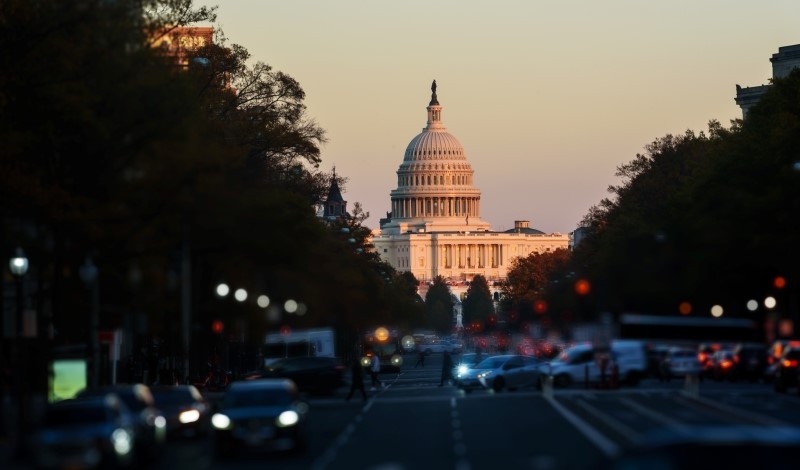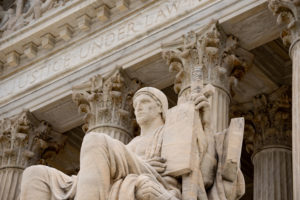
Scholar analyzes the problems of unwritten state law implementing federal programs.
State administrative laws often exist in the shadows. One state waited until 2023, nearly 60 years after adopting its administrative procedure act, to define a “rule.” How does unwritten state law impact the implementation of federal programs?
In a forthcoming article, Anthony B. Derron, a Harry A. Bigelow Fellow and Lecturer in Law at the University of Chicago Law School, argues that unwritten state laws undermine the success of federal programs and agency decision-making. Through examples draw from across the United States, Derron illustrates how the unwritten and underspecified nature of state administrative law leaves regulated entities, the public, and federal counterparts in the dark.
Derron notes that states are responsible for nearly 90 percent of the implementation and enforcement of federal programs. He explains that states should have legal frameworks that balance federal standards with local needs when implementing federal programs. These legal frameworks—which federal law assumes are in place—would specify, for example, how state agencies decide who receives a permit, when enforcement action is warranted, and where policy is needed, he notes. Derron’s research uncovers that state administrative law often lacks this specificity.
Derron offers as an example an Oregon Supreme Court case in which a state agency changed its interpretation of the federal Resource Conservation and Recovery Act to require a new permit for car dismantlers. The agency only shared the new interpretation with two companies through unpublished letters. Derron explains that the state agency’s new interpretation was “a change in federal law,” involving an “enormously consequential federal program,” without notice to the general public.
Derron also stresses that prior to this case, Oregon had never addressed what counts as a “rule” under its administrative procedure act. Had it not been for the lawsuit, he points out, “it might have been another sixty years before” this core term was adequately defined.
Using another example, Derron explains the accountability problems of unwritten state law. A Colorado agency had an unpublished policy governing when physicians could lose their licenses for recommending medical marijuana too often. Although the agency had a “strict numerical cut-off,” it did not inform the public about the policy.
Derron argues that these failures are not isolated incidents. Through a survey across all fifty states, Derron finds that state administrative law is largely unwritten. States “rarely publish guidance, adjudications, or denials to petitions for rulemaking,” choosing instead to “alert the regulated entities . . . and no one else,” he claims.
Derron argues that as a result, state agencies make decisions “in the shadow of administrative law.” He says that state agencies often do not explain key features of their administrative systems, such as what mechanisms they use for decision-making—rulemaking, adjudication, or guidance—and the reasons for choosing one over another. Derron also finds that there is “superlatively little caselaw supplying the scaffolding for where and how an agency can make policy,” which furthers “the cycle of unwritten law.”
Derron also argues that unwritten administrative law impairs judicial review because courts cannot evaluate the bases for agency action. He finds that federal enforcement of state implementation is hampered as well because federal agencies have no opportunity to uncover potential violations.
Derron contends that unwritten state law diminishes the value of federal programs to the public. Without clear, written state administrative law, he explains, it becomes difficult to assess the effects of state agency decisions. Derron says that without a record of the costs and benefits of different policy changes and interpretations, there is “no measuring stick.”
Derron does not fault states for failing to issue written rules and guidance. He attributes the differences between federal and state implementation of federal programs to differing “legislative, executive, and judicial configurations.” Because state agencies are neither visible nor accessible and local media does not cover them, Derron argues that the public lacks capacity to monitor them. Regulated entities with “insider knowledge” have little incentive to speak out, he claims. Derron also suggests that citizens and interest groups may rationally focus their efforts on state governors, who are more visible and make seemingly final regulatory decisions.
Despite the problems of state implementation of federal programs, Derron expects that state agencies will grow, innovate, and drive regulatory change. Derron calls on state courts and legislatures to “adopt federal law as their own” and develop “legal frameworks that direct how, when, and where agencies make decisions.” As the regulatory landscape continues to evolve, Derron underscores the need for states to embrace administrative law norms, such as notice, public discourse, participation, and reason-giving during the “last mile” of federal law implementation.



